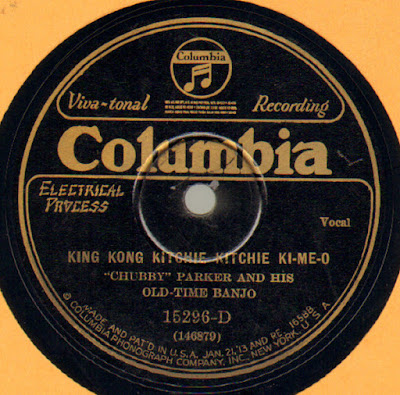Place Where I Was Partly Raised
Original Facebook post here.
Today's formative-album replay: Peter, Paul and Mary. Revisiting this earnest, clean-cut debut record by a group I once revered felt for me roughly like it must for other people to look at pictures of themselves in bell bottoms or disco suits or mullets, as the case may be; though my mid-'80s folk phase didn't coincide with the appropriate generation--it was a consciously retro obsession--it was no less ardently pursued, with all the blind, unfiltered subjectivity of youth. I feel I must hasten to add that my folk diet also contained healthy servings of Leadbelly and Woody Guthrie, the Limeliters and Bud & Travis (Dylan and Dave Van Ronk would come later). But PP&M, with this and their subsequent two albums (Moving and In the Wind), were major "folk" touchstones for me, and that influence is hard to shake.
I put "folk" in scare quotes because this listen really got me thinking: Just what was this thing called folk, as this trio helped to define it for generations of guitar pickers, protest singers, and church praise bands? Having since heard some of the source material on which their versions were based, it's striking how foursquare and prettified, even classical, PP&M's versions are. This is weird, old American music domesticated for Mitch Miller and Ed Sullivan. When they do nod to the blues, in either their vocals or the guitar parts, they sound similarly prim, even when they're manic (I wholly sympathize, of course--I've also been the white guy trying to make up for lack of soul with speed, volume, and passion).
So is there anything of value here? Though I much prefer their later Album 1700 and some of the songs I recall from their Ten Years Together collection, I think I played this collection so much because, within the confines of their "folk" shtick, they're never less than pros, and though as a group they could often create a blandly anthemic sound, they didn't quite lose their quirky individual personalities when they were pressed by manager Al Grossman into a Greenwich Village supergroup; they're accomplished and tasteful, sure, but not off-puttingly slick. And their arrangements, for all their limitations, have their undeniable pleasures.
As with Simon & Garfunkel's Wednesday Morning 3 A.M., the vocals are neatly panned (in this case, Mary leads from the middle, while Peter takes the left and Paul the right), so there's a kind of take-it-or-leave-it transparency to the whole enterprise that is refreshing. No one's trying to pull anything here; the music, with all its flaws and merits, is quite naked.
I will admit that I can barely stand to listen to the anti-war songs--not for their anti-war sentiment but because their old-timey quaintness, in context, seems way wide of the mark--and the children's songs are still oddly serious, even lachrymose. But the gospel tunes hold up well, ballads like "Sorrow" and "500 Miles" still go down easy, and--to my pleasant surprise--the quasi-Latin novelties, "Bamboo" and "Lemon Tree," made me smile. Perhaps the Belafonte-esque, proto-world music strain of the folk era now strikes me as simply more fun, and more honestly showbiz, than the somber-hairshirt routine embodied by the rest. Originally I think these preferences were reversed, but I was so much older then; I'm younger than that now.
Comments:
Chris Wells another beautiful, thoughtful post. thanks for sharing these, rob.
Joe McDade It
must have been the mid- to late-70s when KPHO TV 5 in Phoenix ran
reruns of the old Jack Benny show like at 11:30 at night. First time I
ever saw them, up late at night babysitting my younger brothers. They
sang "Blowin' in the Wind" and looked so
EARNEST. Benny walked out on stage to shake their hands. When the
applause died down he asked which of them was Peter and which Paul. When
they ID'd themselves he turned to their partner and said, "So I guess
that would would make you Mary."
Rob Weinert-Kendt Great
story, Joe. What I didn't have room for in my post is that I trace the
beginning of my high school folk phase to your playing the song "Sounds
of Silence" in your car on a break from play rehearsal in the parking
lot at Central High. I'd never heard
it, and it blew me away. Another fun fact: My folk appetite was then
fed by the record collection of another friend's dad. Yes, Jon Kyl
apparently had a youthful folk phase, too.
Joe McDade Great
image. Wonder how he dressed. For you, that must have been like
finding out that "B-1" Bob Dornan, before being elected as Orange County
Congressman and becoming one of Reagan/Bush's loyal foot soldiers,
risked life and freedom in the South in the 1950s in an effort to
register black voters. Which he did.
Joe McDade By
the way, I remember everything about that audiotape: the color of the
cassette (grey), the color of the label (white) the nature of my own
marks (black ballpoint). That entire school year, just about every time
I took out you-know-who on a Friday or
Saturday night, that S&G mix was the tape I played on the way home,
most memorably on that stretch of Indian School that runs along the
canal, mile after winding mile with no streetlight. For all that--well,
you couldn't really call it my folk phase, but it took me four more
years to go nuts for Dylan, at USC, once again when you were a freshman
and I was a senior.




Comments
Post a Comment